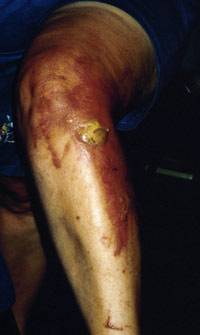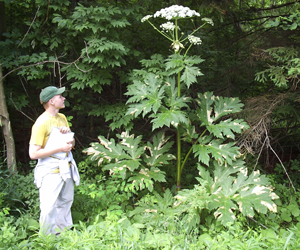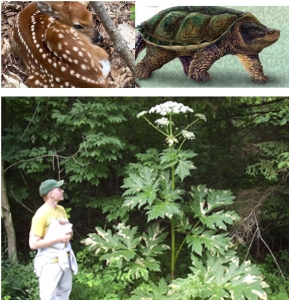‘Tis the season be on the watch for these three natural wonders
By Andrew Harris
The first week of June is a magic time, birth is all around us, everything is reproducing and growing. I could list off and ramble on about all the amazing things happening right now: Baby birds hatching, phlox blooming, dragonflies emerging, toad songs, tiny wild strawberries, whirllygigs. Of all those great things that only happen a few days of the year, but I’ve got three concerns that may cross your path today.
Turtles! Not just the snapping turtle, but almost all of our native testudines are nesting right now. Turtles have nesting grounds, from which they likely once emerged, that they lay their eggs in every year. The site is usually adjecent to the wetland they call home, in a nice sandy and well drained location. Turtles plod across fields, and often roads to lay eggs. They dig a shallow nest, place their eggs, cover the nest, then turn around and go back home. Please be looking for turtles in the road, ranging from 25 pound snappers to box turtles about the size of your hand. If you can safely help the turtle across the road, we’d appreciate it. If the turtle is a large snapping turtle be very cautious: They bite, very hard, even the little guys. Gently coaxing the turtle across the road and keeping other drivers aware is often better for snapping turtles. And folks, don’t try to save a turtle on a major road or highway.

Fawns!! Our large whitetail deer population keep a pretty tight schedule when it comes to welcoming the next generation. Because deer all mate in the same short window each autumn, aka “the rut,” they all give birth at the same time, early June. Often people find a fawn alone, curled in a ball, with no mother in sight. While it is natural to be awed by the sheer cuteness, just say hello and leave the baby alone. Resist the urge to pick up the deer and don’t call the forest ranger. Nine times out of ten, the baby is there by design, hiding out while mom goes out for lunch, and sometimes dinner too. Handling the fawn or relocating, could spell disaster in an already delicate situtation. When in doubt about a fawn, call a NYS Wildlife Rehabilitator before intervening.
Giant Hogweed!!! Watch out if you are anywhere near any local waterway, these plants are so dangerous. The invasive species, like wild parsnip on steroids, is now widespread in the lowlands of Allegany County. The Genesee River has giant hogweed all over her banks, and the main tributary streams as well. A family member last summer bent down to grab a kids ball from the “weeds” and came in contact with a giant hogweed plant. Just the slightest brush against the face caused months of agony from the burns which left a permanent scar. The plant can be three feet tall, or up to over twelve feet tall. While it is always dangerous, when flowering the toxic elements peak and just a chance encounter can be painful for man or beast. If you are anywhere near a streambed, exercise extreme caution and look for this plant:


Read more about giant hogweed:





